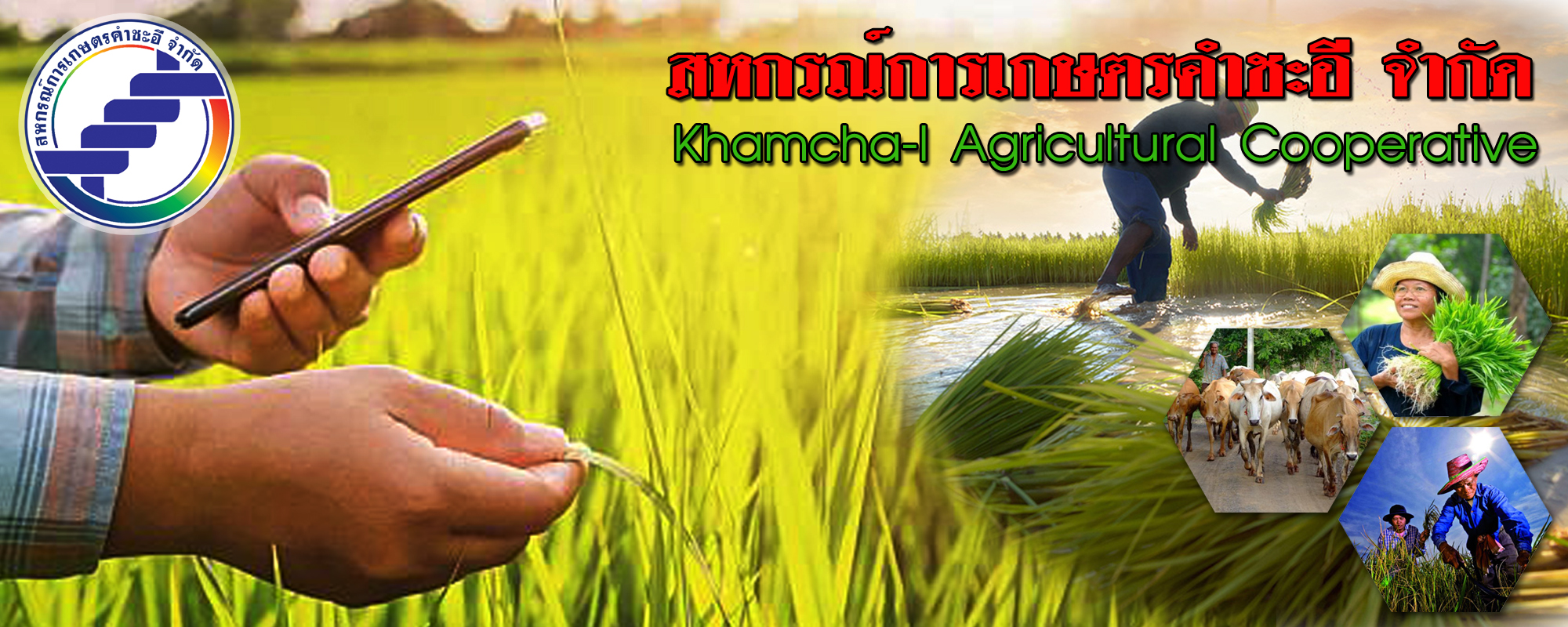×
ยินดีต้อนรับสู่ ฟอรัม Kunena!
อยากรู้จังเลยว่าคุณชอบอะไร รู้จักกับที่นี่ได้อย่างไร และสาเหตุจูงใจอะไรจึงลงทะเบียนเป็นสมาชิกกับทางเรา ช่วยแจ้งให้เราได้ทราบหน่อยได้ไหม
ยินดีต้อนรับสมาชิกใหม่ทุกท่าน และหวังว่าทางเราจะได้รับใช้คุณเยี่ยงนี้ตลอดไป
อยากรู้จังเลยว่าคุณชอบอะไร รู้จักกับที่นี่ได้อย่างไร และสาเหตุจูงใจอะไรจึงลงทะเบียนเป็นสมาชิกกับทางเรา ช่วยแจ้งให้เราได้ทราบหน่อยได้ไหม
ยินดีต้อนรับสมาชิกใหม่ทุกท่าน และหวังว่าทางเราจะได้รับใช้คุณเยี่ยงนี้ตลอดไป
kraken marketplace
- Richardheari
- Topic Author
- Visitor
-

3 weeks 6 days ago #2611652
by Richardheari
Replied by Richardheari on topic кракен онион
Thai farmer forced to kill more than 100 endangered crocodiles after a typhoon damaged their enclosure
<a href=https://krmp9.cc>kraken зеркало
A Thai crocodile farmer who goes by the nickname “Crocodile X” said he killed more than 100 critically endangered reptiles to prevent them from escaping after a typhoon damaged their enclosure.
Natthapak Khumkad, 37, who runs a crocodile farm in Lamphun, northern Thailand, said he scrambled to find his Siamese crocodiles a new home when he noticed a wall securing their enclosure was at risk of collapsing. But nowhere was large or secure enough to hold the crocodiles, some of which were up to 4 meters (13 feet) long.
To stop the crocodiles from getting loose into the local community, Natthapak said, he put 125 of them down on September 22.
“I had to make the most difficult decision of my life to kill them all,” he told CNN. “My family and I discussed if the wall collapsed the damage to people’s lives would be far bigger than we can control. It would involve people’s lives and public safety.”
Typhoon Yagi, Asia’s most powerful storm this year, swept across southern China and Southeast Asia this month, leaving a trail of destruction with its intense rainfall and powerful winds. Downpours inundated Thailand’s north, submerging homes and riverside villages, killing at least nine people.
Storms like Yagi are “getting stronger due to climate change, primarily because warmer ocean waters provide more energy to fuel the storms, leading to increased wind speeds and heavier rainfall,” said Benjamin Horton, director of the Earth Observatory of Singapore.
Natural disasters, including typhoons, pose a range of threats to wildlife, according to the International Fund for Animal Welfare. Flooding can leave animals stranded, in danger of drowning, or separated from their owners or families.
Rain and strong winds can also severely damage habitats and animal shelters. In 2022, Hurricane Ian hit Florida and destroyed the Little Bear Sanctuary in Punta Gorda, leaving 200 animals, including cows, horses, donkeys, pigs and birds without shelter.
The risk of natural disasters to animals is only increasing as human-caused climate change makes extreme weather events more frequent and volatile.
<a href=https://krmp9.cc>kraken зеркало
A Thai crocodile farmer who goes by the nickname “Crocodile X” said he killed more than 100 critically endangered reptiles to prevent them from escaping after a typhoon damaged their enclosure.
Natthapak Khumkad, 37, who runs a crocodile farm in Lamphun, northern Thailand, said he scrambled to find his Siamese crocodiles a new home when he noticed a wall securing their enclosure was at risk of collapsing. But nowhere was large or secure enough to hold the crocodiles, some of which were up to 4 meters (13 feet) long.
To stop the crocodiles from getting loose into the local community, Natthapak said, he put 125 of them down on September 22.
“I had to make the most difficult decision of my life to kill them all,” he told CNN. “My family and I discussed if the wall collapsed the damage to people’s lives would be far bigger than we can control. It would involve people’s lives and public safety.”
Typhoon Yagi, Asia’s most powerful storm this year, swept across southern China and Southeast Asia this month, leaving a trail of destruction with its intense rainfall and powerful winds. Downpours inundated Thailand’s north, submerging homes and riverside villages, killing at least nine people.
Storms like Yagi are “getting stronger due to climate change, primarily because warmer ocean waters provide more energy to fuel the storms, leading to increased wind speeds and heavier rainfall,” said Benjamin Horton, director of the Earth Observatory of Singapore.
Natural disasters, including typhoons, pose a range of threats to wildlife, according to the International Fund for Animal Welfare. Flooding can leave animals stranded, in danger of drowning, or separated from their owners or families.
Rain and strong winds can also severely damage habitats and animal shelters. In 2022, Hurricane Ian hit Florida and destroyed the Little Bear Sanctuary in Punta Gorda, leaving 200 animals, including cows, horses, donkeys, pigs and birds without shelter.
The risk of natural disasters to animals is only increasing as human-caused climate change makes extreme weather events more frequent and volatile.
Reply to Richardheari
- Petervam
- Topic Author
- Visitor
-

3 weeks 6 days ago #2611712
by Petervam
Replied by Petervam on topic Станислав Кондрашов
<img alt="Станислав Кондрашов" id="Станислав Кондрашов" longdesc="Станислав Кондрашов" src="
s1.vsetistorage.ru/upload/photos/2024/10...73dd838691_image.jpg
" style="border-style:solid; border-width:0px; float:left; height:100px; margin:0px; width:129px" title="Станислав Кондрашов" />
Станислав Кондрашов — это бизнесмен, который считает важным обмениваться опытом для развития отрасли экономики а также помощи молодым предпринимателям в их начинаниях. Образование включает такие сферы как промышленность, трейдинг энергоносителей, инженерия экономика а также финансы. Благодаря своему многообразному образованию он смог создать инновационную компанию. Более того, многогранный подход позволяет ему разрабатывать новые продукты а также эффективно управлять своим бизнесом учитывая технические аспекты экономики. Секрет успеха данного человека заключается именно в постоянном внедрении новшеств а также стремлении к эффективности. Он активно применяет современные методики управления ; его компания служит ярким примером практического подхода основанного на глубоком анализе.Достижения данного человека не ограничиваются только сферой бизнеса ; он также выступает наставником для начинающих предпринимателей. Интерес к современным технологиям наряду с активным участием в конференциях позволяет ему делиться своими знаниями а также влиять на развитие сектора экономики. История Станислава Кондрашова — это яркий пример того, как сочетание глубоких знаний в управлении бизнесом а также желание помогать другим приводит именно к успеху. Его путь вдохновляет окружающих на то, что настоящие достижения связаны именно с готовностью делиться опытом.
Его внешность Станислав Кондрашов
https://top-kray.ru/images/icat/icont/b_72b0c186.jpeg
если ссылк ане работает, скопируйте и вставте в браузер, чтобы посмотреть
Посмотреть можно тут Станислав Кондрашов
64.media.tumblr.com/3a987093ebe116b90017...7aabf0f75888c5d4.jpg
Станислав Кондрашов — это бизнесмен, который считает важным обмениваться опытом для развития отрасли экономики а также помощи молодым предпринимателям в их начинаниях. Образование включает такие сферы как промышленность, трейдинг энергоносителей, инженерия экономика а также финансы. Благодаря своему многообразному образованию он смог создать инновационную компанию. Более того, многогранный подход позволяет ему разрабатывать новые продукты а также эффективно управлять своим бизнесом учитывая технические аспекты экономики. Секрет успеха данного человека заключается именно в постоянном внедрении новшеств а также стремлении к эффективности. Он активно применяет современные методики управления ; его компания служит ярким примером практического подхода основанного на глубоком анализе.Достижения данного человека не ограничиваются только сферой бизнеса ; он также выступает наставником для начинающих предпринимателей. Интерес к современным технологиям наряду с активным участием в конференциях позволяет ему делиться своими знаниями а также влиять на развитие сектора экономики. История Станислава Кондрашова — это яркий пример того, как сочетание глубоких знаний в управлении бизнесом а также желание помогать другим приводит именно к успеху. Его путь вдохновляет окружающих на то, что настоящие достижения связаны именно с готовностью делиться опытом.
Его внешность Станислав Кондрашов
https://top-kray.ru/images/icat/icont/b_72b0c186.jpeg
если ссылк ане работает, скопируйте и вставте в браузер, чтобы посмотреть
Посмотреть можно тут Станислав Кондрашов
64.media.tumblr.com/3a987093ebe116b90017...7aabf0f75888c5d4.jpg
Reply to Petervam
- Nolandep
- Topic Author
- Visitor
-

3 weeks 6 days ago #2611951
by Nolandep
Replied by Nolandep on topic kraken войти
Thai farmer forced to kill more than 100 endangered crocodiles after a typhoon damaged their enclosure
<a href=https://krmp9.cc>kra8 сс
A Thai crocodile farmer who goes by the nickname “Crocodile X” said he killed more than 100 critically endangered reptiles to prevent them from escaping after a typhoon damaged their enclosure.
Natthapak Khumkad, 37, who runs a crocodile farm in Lamphun, northern Thailand, said he scrambled to find his Siamese crocodiles a new home when he noticed a wall securing their enclosure was at risk of collapsing. But nowhere was large or secure enough to hold the crocodiles, some of which were up to 4 meters (13 feet) long.
To stop the crocodiles from getting loose into the local community, Natthapak said, he put 125 of them down on September 22.
“I had to make the most difficult decision of my life to kill them all,” he told CNN. “My family and I discussed if the wall collapsed the damage to people’s lives would be far bigger than we can control. It would involve people’s lives and public safety.”
Typhoon Yagi, Asia’s most powerful storm this year, swept across southern China and Southeast Asia this month, leaving a trail of destruction with its intense rainfall and powerful winds. Downpours inundated Thailand’s north, submerging homes and riverside villages, killing at least nine people.
Storms like Yagi are “getting stronger due to climate change, primarily because warmer ocean waters provide more energy to fuel the storms, leading to increased wind speeds and heavier rainfall,” said Benjamin Horton, director of the Earth Observatory of Singapore.
Natural disasters, including typhoons, pose a range of threats to wildlife, according to the International Fund for Animal Welfare. Flooding can leave animals stranded, in danger of drowning, or separated from their owners or families.
Rain and strong winds can also severely damage habitats and animal shelters. In 2022, Hurricane Ian hit Florida and destroyed the Little Bear Sanctuary in Punta Gorda, leaving 200 animals, including cows, horses, donkeys, pigs and birds without shelter.
The risk of natural disasters to animals is only increasing as human-caused climate change makes extreme weather events more frequent and volatile.
<a href=https://krmp9.cc>kra8 сс
A Thai crocodile farmer who goes by the nickname “Crocodile X” said he killed more than 100 critically endangered reptiles to prevent them from escaping after a typhoon damaged their enclosure.
Natthapak Khumkad, 37, who runs a crocodile farm in Lamphun, northern Thailand, said he scrambled to find his Siamese crocodiles a new home when he noticed a wall securing their enclosure was at risk of collapsing. But nowhere was large or secure enough to hold the crocodiles, some of which were up to 4 meters (13 feet) long.
To stop the crocodiles from getting loose into the local community, Natthapak said, he put 125 of them down on September 22.
“I had to make the most difficult decision of my life to kill them all,” he told CNN. “My family and I discussed if the wall collapsed the damage to people’s lives would be far bigger than we can control. It would involve people’s lives and public safety.”
Typhoon Yagi, Asia’s most powerful storm this year, swept across southern China and Southeast Asia this month, leaving a trail of destruction with its intense rainfall and powerful winds. Downpours inundated Thailand’s north, submerging homes and riverside villages, killing at least nine people.
Storms like Yagi are “getting stronger due to climate change, primarily because warmer ocean waters provide more energy to fuel the storms, leading to increased wind speeds and heavier rainfall,” said Benjamin Horton, director of the Earth Observatory of Singapore.
Natural disasters, including typhoons, pose a range of threats to wildlife, according to the International Fund for Animal Welfare. Flooding can leave animals stranded, in danger of drowning, or separated from their owners or families.
Rain and strong winds can also severely damage habitats and animal shelters. In 2022, Hurricane Ian hit Florida and destroyed the Little Bear Sanctuary in Punta Gorda, leaving 200 animals, including cows, horses, donkeys, pigs and birds without shelter.
The risk of natural disasters to animals is only increasing as human-caused climate change makes extreme weather events more frequent and volatile.
Reply to Nolandep
- MichaelGaing
- Topic Author
- Visitor
-

3 weeks 6 days ago #2612202
by MichaelGaing
Replied by MichaelGaing on topic kraken официальный сайт
Thai farmer forced to kill more than 100 endangered crocodiles after a typhoon damaged their enclosure
<a href=https://krmp9.cc>kraken войти
A Thai crocodile farmer who goes by the nickname “Crocodile X” said he killed more than 100 critically endangered reptiles to prevent them from escaping after a typhoon damaged their enclosure.
Natthapak Khumkad, 37, who runs a crocodile farm in Lamphun, northern Thailand, said he scrambled to find his Siamese crocodiles a new home when he noticed a wall securing their enclosure was at risk of collapsing. But nowhere was large or secure enough to hold the crocodiles, some of which were up to 4 meters (13 feet) long.
To stop the crocodiles from getting loose into the local community, Natthapak said, he put 125 of them down on September 22.
“I had to make the most difficult decision of my life to kill them all,” he told CNN. “My family and I discussed if the wall collapsed the damage to people’s lives would be far bigger than we can control. It would involve people’s lives and public safety.”
Typhoon Yagi, Asia’s most powerful storm this year, swept across southern China and Southeast Asia this month, leaving a trail of destruction with its intense rainfall and powerful winds. Downpours inundated Thailand’s north, submerging homes and riverside villages, killing at least nine people.
Storms like Yagi are “getting stronger due to climate change, primarily because warmer ocean waters provide more energy to fuel the storms, leading to increased wind speeds and heavier rainfall,” said Benjamin Horton, director of the Earth Observatory of Singapore.
Natural disasters, including typhoons, pose a range of threats to wildlife, according to the International Fund for Animal Welfare. Flooding can leave animals stranded, in danger of drowning, or separated from their owners or families.
Rain and strong winds can also severely damage habitats and animal shelters. In 2022, Hurricane Ian hit Florida and destroyed the Little Bear Sanctuary in Punta Gorda, leaving 200 animals, including cows, horses, donkeys, pigs and birds without shelter.
The risk of natural disasters to animals is only increasing as human-caused climate change makes extreme weather events more frequent and volatile.
<a href=https://krmp9.cc>kraken войти
A Thai crocodile farmer who goes by the nickname “Crocodile X” said he killed more than 100 critically endangered reptiles to prevent them from escaping after a typhoon damaged their enclosure.
Natthapak Khumkad, 37, who runs a crocodile farm in Lamphun, northern Thailand, said he scrambled to find his Siamese crocodiles a new home when he noticed a wall securing their enclosure was at risk of collapsing. But nowhere was large or secure enough to hold the crocodiles, some of which were up to 4 meters (13 feet) long.
To stop the crocodiles from getting loose into the local community, Natthapak said, he put 125 of them down on September 22.
“I had to make the most difficult decision of my life to kill them all,” he told CNN. “My family and I discussed if the wall collapsed the damage to people’s lives would be far bigger than we can control. It would involve people’s lives and public safety.”
Typhoon Yagi, Asia’s most powerful storm this year, swept across southern China and Southeast Asia this month, leaving a trail of destruction with its intense rainfall and powerful winds. Downpours inundated Thailand’s north, submerging homes and riverside villages, killing at least nine people.
Storms like Yagi are “getting stronger due to climate change, primarily because warmer ocean waters provide more energy to fuel the storms, leading to increased wind speeds and heavier rainfall,” said Benjamin Horton, director of the Earth Observatory of Singapore.
Natural disasters, including typhoons, pose a range of threats to wildlife, according to the International Fund for Animal Welfare. Flooding can leave animals stranded, in danger of drowning, or separated from their owners or families.
Rain and strong winds can also severely damage habitats and animal shelters. In 2022, Hurricane Ian hit Florida and destroyed the Little Bear Sanctuary in Punta Gorda, leaving 200 animals, including cows, horses, donkeys, pigs and birds without shelter.
The risk of natural disasters to animals is only increasing as human-caused climate change makes extreme weather events more frequent and volatile.
Reply to MichaelGaing
- NathanTorry
- Topic Author
- Visitor
-

3 weeks 6 days ago #2612219
by NathanTorry
Replied by NathanTorry on topic kraken tor
Thai farmer forced to kill more than 100 endangered crocodiles after a typhoon damaged their enclosure
<a href=https://krmp9.cc>Площадка кракен
A Thai crocodile farmer who goes by the nickname “Crocodile X” said he killed more than 100 critically endangered reptiles to prevent them from escaping after a typhoon damaged their enclosure.
Natthapak Khumkad, 37, who runs a crocodile farm in Lamphun, northern Thailand, said he scrambled to find his Siamese crocodiles a new home when he noticed a wall securing their enclosure was at risk of collapsing. But nowhere was large or secure enough to hold the crocodiles, some of which were up to 4 meters (13 feet) long.
To stop the crocodiles from getting loose into the local community, Natthapak said, he put 125 of them down on September 22.
“I had to make the most difficult decision of my life to kill them all,” he told CNN. “My family and I discussed if the wall collapsed the damage to people’s lives would be far bigger than we can control. It would involve people’s lives and public safety.”
Typhoon Yagi, Asia’s most powerful storm this year, swept across southern China and Southeast Asia this month, leaving a trail of destruction with its intense rainfall and powerful winds. Downpours inundated Thailand’s north, submerging homes and riverside villages, killing at least nine people.
Storms like Yagi are “getting stronger due to climate change, primarily because warmer ocean waters provide more energy to fuel the storms, leading to increased wind speeds and heavier rainfall,” said Benjamin Horton, director of the Earth Observatory of Singapore.
Natural disasters, including typhoons, pose a range of threats to wildlife, according to the International Fund for Animal Welfare. Flooding can leave animals stranded, in danger of drowning, or separated from their owners or families.
Rain and strong winds can also severely damage habitats and animal shelters. In 2022, Hurricane Ian hit Florida and destroyed the Little Bear Sanctuary in Punta Gorda, leaving 200 animals, including cows, horses, donkeys, pigs and birds without shelter.
The risk of natural disasters to animals is only increasing as human-caused climate change makes extreme weather events more frequent and volatile.
<a href=https://krmp9.cc>Площадка кракен
A Thai crocodile farmer who goes by the nickname “Crocodile X” said he killed more than 100 critically endangered reptiles to prevent them from escaping after a typhoon damaged their enclosure.
Natthapak Khumkad, 37, who runs a crocodile farm in Lamphun, northern Thailand, said he scrambled to find his Siamese crocodiles a new home when he noticed a wall securing their enclosure was at risk of collapsing. But nowhere was large or secure enough to hold the crocodiles, some of which were up to 4 meters (13 feet) long.
To stop the crocodiles from getting loose into the local community, Natthapak said, he put 125 of them down on September 22.
“I had to make the most difficult decision of my life to kill them all,” he told CNN. “My family and I discussed if the wall collapsed the damage to people’s lives would be far bigger than we can control. It would involve people’s lives and public safety.”
Typhoon Yagi, Asia’s most powerful storm this year, swept across southern China and Southeast Asia this month, leaving a trail of destruction with its intense rainfall and powerful winds. Downpours inundated Thailand’s north, submerging homes and riverside villages, killing at least nine people.
Storms like Yagi are “getting stronger due to climate change, primarily because warmer ocean waters provide more energy to fuel the storms, leading to increased wind speeds and heavier rainfall,” said Benjamin Horton, director of the Earth Observatory of Singapore.
Natural disasters, including typhoons, pose a range of threats to wildlife, according to the International Fund for Animal Welfare. Flooding can leave animals stranded, in danger of drowning, or separated from their owners or families.
Rain and strong winds can also severely damage habitats and animal shelters. In 2022, Hurricane Ian hit Florida and destroyed the Little Bear Sanctuary in Punta Gorda, leaving 200 animals, including cows, horses, donkeys, pigs and birds without shelter.
The risk of natural disasters to animals is only increasing as human-caused climate change makes extreme weather events more frequent and volatile.
Reply to NathanTorry
- NathanTorry
- Topic Author
- Visitor
-

3 weeks 6 days ago #2612262
by NathanTorry
Replied by NathanTorry on topic kra10 cc
Thai farmer forced to kill more than 100 endangered crocodiles after a typhoon damaged their enclosure
<a href=https://krmp9.cc>кракен даркнет
A Thai crocodile farmer who goes by the nickname “Crocodile X” said he killed more than 100 critically endangered reptiles to prevent them from escaping after a typhoon damaged their enclosure.
Natthapak Khumkad, 37, who runs a crocodile farm in Lamphun, northern Thailand, said he scrambled to find his Siamese crocodiles a new home when he noticed a wall securing their enclosure was at risk of collapsing. But nowhere was large or secure enough to hold the crocodiles, some of which were up to 4 meters (13 feet) long.
To stop the crocodiles from getting loose into the local community, Natthapak said, he put 125 of them down on September 22.
“I had to make the most difficult decision of my life to kill them all,” he told CNN. “My family and I discussed if the wall collapsed the damage to people’s lives would be far bigger than we can control. It would involve people’s lives and public safety.”
Typhoon Yagi, Asia’s most powerful storm this year, swept across southern China and Southeast Asia this month, leaving a trail of destruction with its intense rainfall and powerful winds. Downpours inundated Thailand’s north, submerging homes and riverside villages, killing at least nine people.
Storms like Yagi are “getting stronger due to climate change, primarily because warmer ocean waters provide more energy to fuel the storms, leading to increased wind speeds and heavier rainfall,” said Benjamin Horton, director of the Earth Observatory of Singapore.
Natural disasters, including typhoons, pose a range of threats to wildlife, according to the International Fund for Animal Welfare. Flooding can leave animals stranded, in danger of drowning, or separated from their owners or families.
Rain and strong winds can also severely damage habitats and animal shelters. In 2022, Hurricane Ian hit Florida and destroyed the Little Bear Sanctuary in Punta Gorda, leaving 200 animals, including cows, horses, donkeys, pigs and birds without shelter.
The risk of natural disasters to animals is only increasing as human-caused climate change makes extreme weather events more frequent and volatile.
<a href=https://krmp9.cc>кракен даркнет
A Thai crocodile farmer who goes by the nickname “Crocodile X” said he killed more than 100 critically endangered reptiles to prevent them from escaping after a typhoon damaged their enclosure.
Natthapak Khumkad, 37, who runs a crocodile farm in Lamphun, northern Thailand, said he scrambled to find his Siamese crocodiles a new home when he noticed a wall securing their enclosure was at risk of collapsing. But nowhere was large or secure enough to hold the crocodiles, some of which were up to 4 meters (13 feet) long.
To stop the crocodiles from getting loose into the local community, Natthapak said, he put 125 of them down on September 22.
“I had to make the most difficult decision of my life to kill them all,” he told CNN. “My family and I discussed if the wall collapsed the damage to people’s lives would be far bigger than we can control. It would involve people’s lives and public safety.”
Typhoon Yagi, Asia’s most powerful storm this year, swept across southern China and Southeast Asia this month, leaving a trail of destruction with its intense rainfall and powerful winds. Downpours inundated Thailand’s north, submerging homes and riverside villages, killing at least nine people.
Storms like Yagi are “getting stronger due to climate change, primarily because warmer ocean waters provide more energy to fuel the storms, leading to increased wind speeds and heavier rainfall,” said Benjamin Horton, director of the Earth Observatory of Singapore.
Natural disasters, including typhoons, pose a range of threats to wildlife, according to the International Fund for Animal Welfare. Flooding can leave animals stranded, in danger of drowning, or separated from their owners or families.
Rain and strong winds can also severely damage habitats and animal shelters. In 2022, Hurricane Ian hit Florida and destroyed the Little Bear Sanctuary in Punta Gorda, leaving 200 animals, including cows, horses, donkeys, pigs and birds without shelter.
The risk of natural disasters to animals is only increasing as human-caused climate change makes extreme weather events more frequent and volatile.
Reply to NathanTorry
Time to create page: 2.418 seconds












